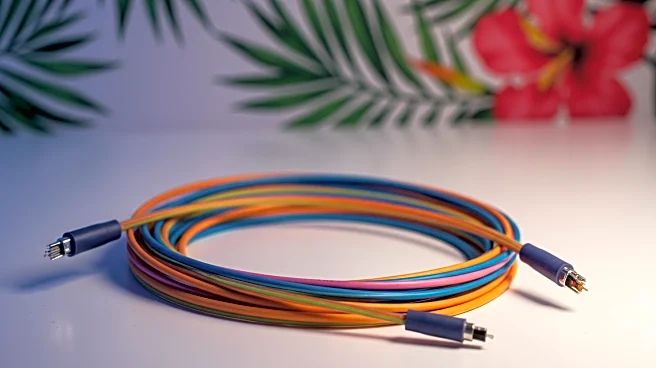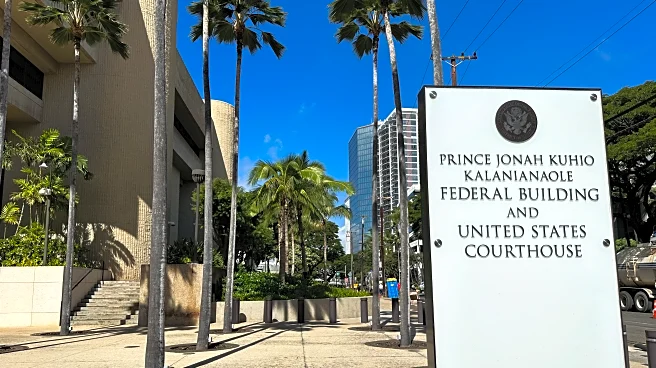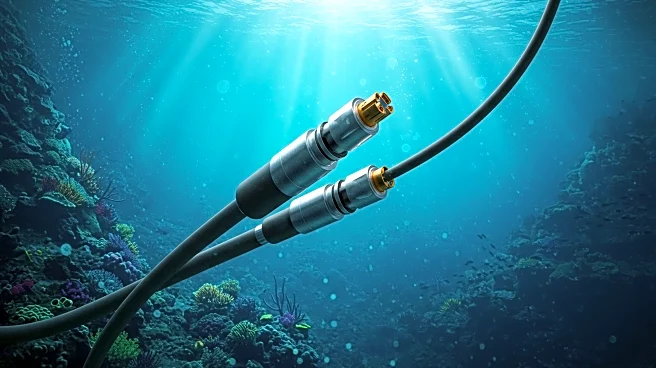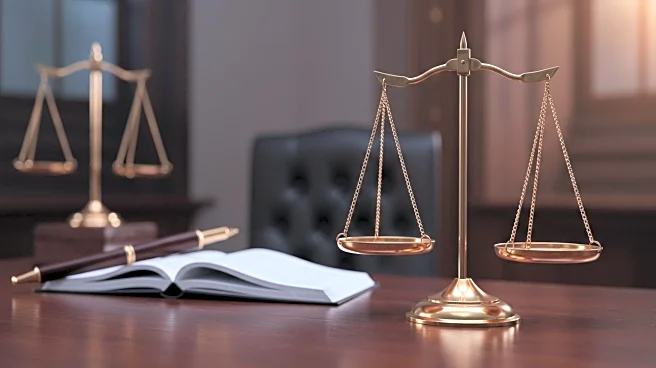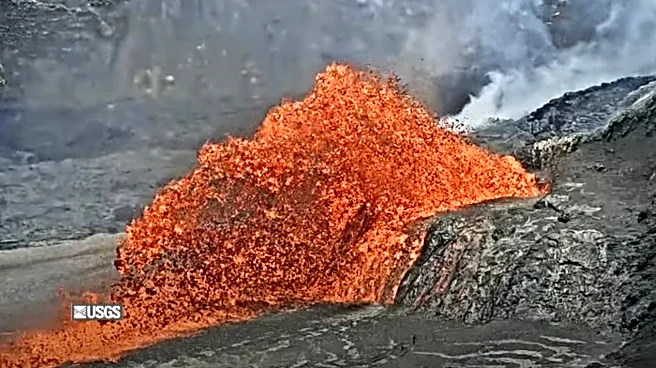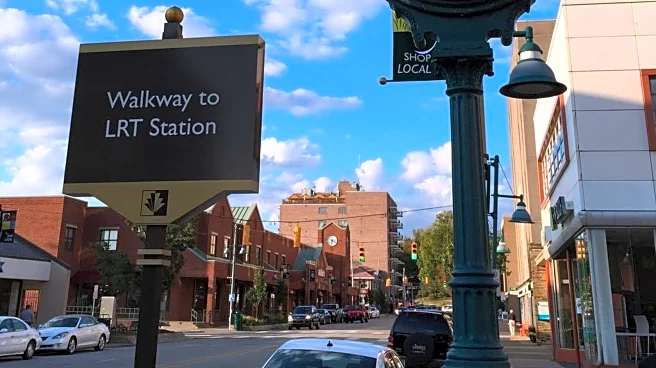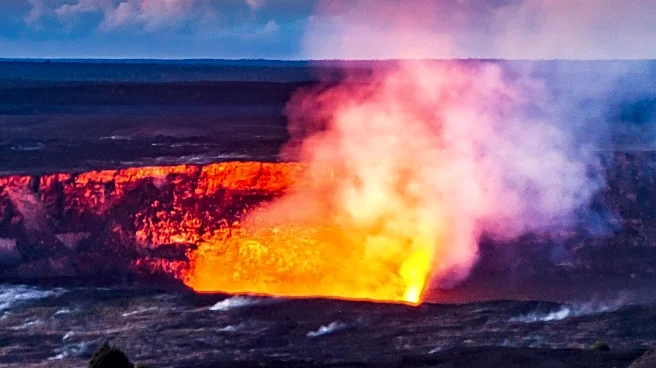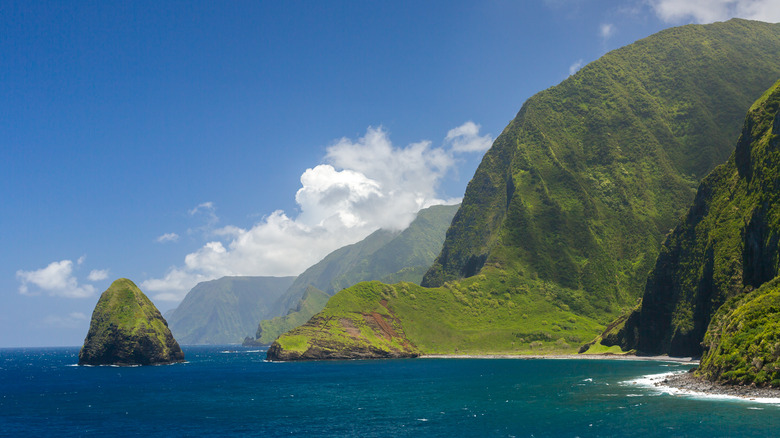
Nearly 10 million visitors travel to Hawaii each year, most flocking to Oahu, Maui, Kauai, and the Big Island. Drawn to colorful snorkeling spots, lush rainforests, and postcard-perfect beaches, Hawaii has long been a paradise for travelers seeking relaxation, surf, and adventure. But for years, there was little to no tourism on Hawaii's fifth-largest island, Molokai. One of Hawaii's best-kept secrets, the island boasts one of the state's longest white-sand beaches and the longest continuous fringing
reef in the United States. Nicknamed the "Friendly Isle," its legacy took a dark turn in the 1800s when Hansen's Disease -- then an incurable contagion known as leprosy -- prompted the Hawaiian government to forcibly exile thousands to the Kalaupapa Peninsula. In 1969, after effective treatments were developed and the disease's spread halted, quarantine laws were lifted. Kalaupapa Peninsula is now a national historical park but has been closed to visitors since 2020. As of this writing, no re-opening timeline has been announced, and in 2025, the unexpected national park shakeup (see also: mass layoffs and federal budget cuts) continued to impact many visits to parks.
While locals embody the island's strong "aloha spirit," rooted in community and tradition, the true motto is "Molokai no ka heke," meaning "Molokai is the greatest." The "friendly" label likely gained traction as the island shed its leprosy stigma, but Molokai's friendliness doesn't necessarily mean tourist-friendly. Molokai has long resisted large-scale development: Locals fiercely protect their land, culture, and way of life, and Molokai consistently records Hawaii's lowest tourism numbers. There are no traffic lights, few paved roads, and no resorts -- just one built in the 1970s, now abandoned for decades. As one longtime visitor wrote, "They are some of the friendliest people in the world, but come in with your big money and big development ideas and it's a hard NO."
Read more: The 5 Cheapest Islands In Hawaii For Your Next Tropical Vacation
Of The Two Hotels On Molokai, One Is Abandoned
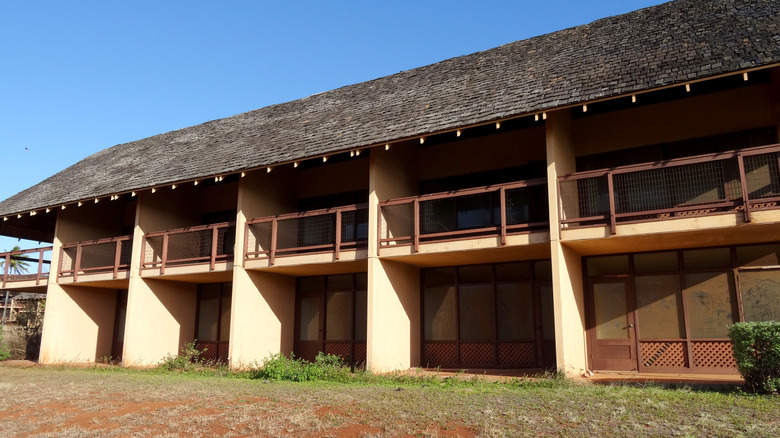
Molokai is 38 miles long and about 10 miles across, loosely divided into east, west, and central regions. The lower, western half is drier than the higher, rainier eastern side, home to the Molokai Forest Reserve and annual rainfall surpassing 300 inches. On the west end, you'll find Papohaku Beach -- aka Three Mile Beach -- one of the largest white-sand beaches in Hawaii. Its currents are strong and too rough for swimming, but it's perfect for a serene beach day or sunset. The beach has bathroom amenities, campsites, and no crowds.
An off-the-beaten-path attraction is Kaluakoi Resort, formerly the Sheraton Molokai Hotel, an abandoned hotel on Molokai Ranch. Open from 1975 to 2001, the resort once featured a golf course and villas, but fell into disrepair after changing ownership. Today, it stands eerily overgrown -- a compelling stop for fans of photography and dark tourism. The island does have one functioning hotel: Hotel Molokai, located in the south-central Kaunakakai, the biggest settlement on Molokai. It's Polynesian style, offering "Old Hawaii" vibes with modern amenities and a waterfront restaurant. Kaunakakai also hosts the Ka Molokai Makahiki Festival each January, a cultural celebration filled with traditional games, food, and performances, including the iconic hula, which is believed to have originated on Molokai.
Just 20 minutes from the airport is the small village of Maunaloa. Once a plantation town, it's now a quiet shopping area, flanked by Papokahu Beach and Kapukahehu Beach, also called the Dixie Maru Beach. There are condos and cottages to rent nearby, as well as boutiques -- just don't expect big malls or high-rises. One unique souvenir here is a handmade kite from Big Wind Kite Factory, where you can take a tour or a free kite-flying lesson.
Lack Of Infrastructure Is Worth The Challenge To See Molokai's Sacred Sites
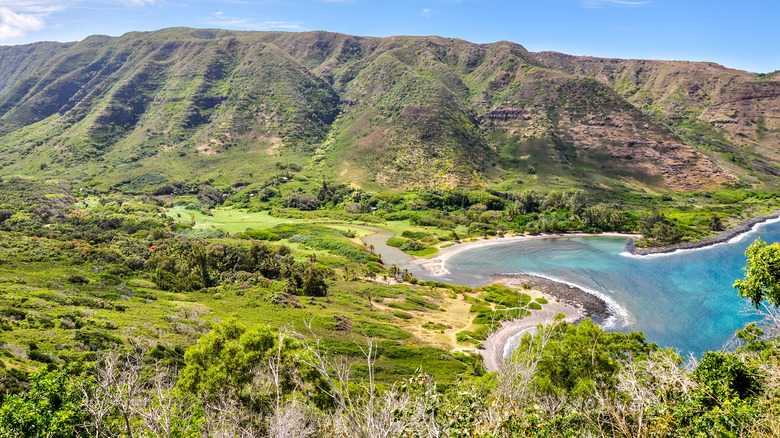
Halawa Valley is one of Molokai's most culturally significant areas. Nearly 4 miles deep, this lush valley is home to sacred heiau (Polynesian temples) dating back to A.D. 650 and the stunning, two-tiered Mo'oula Falls. Since some of the land is privately owned, access requires an authorized guide, and even the drive to the trailhead is challenging. Nearby, Halawa Beach Park features two picturesque beaches, Kaili and Kaiwili, along with restrooms, picnic facilities, and breathtaking views. From April through September, the waters are typically calm enough for swimming. The southern shore is protected by a 28-mile fringing coral reef teeming with manta rays, green sea turtles, and vibrant reef fish. One of its best access points for snorkelers is Kumimi Beach, also known as 20 Mile Marker Beach -- but be cautious during high surf. For guided tours or gear rentals, Molokai Fish & Dive also offers oceanfront condos.
Molokai is served by daily flights from Oahu and Maui. There are no direct mainland flights, and ferry service ended in 2016, so most visitors connect through Honolulu or Kahului via Mokulele Airlines. Renting a car is the best way to explore, but options are limited. Alamo operates a small fleet at the airport, and Molokai Outdoors, a locally owned service, also offers rentals. Taxis are scarce and public transportation is minimal, so planning ahead is essential. A four-wheel-drive vehicle is recommended for reaching more remote areas.
Despite the lack of tourism infrastructure, Molokai welcomes those seeking an authentic, respectful experience-- especially anyone looking to escape the crowds and connect with the real, quiet Hawaii. This is a destination for those willing to listen, learn, and honor a sacred way of life.
Ready to discover more hidden gems and expert travel tips? Subscribe to our free newsletter for access to the world's best-kept travel secrets.
Read the original article on Islands.
